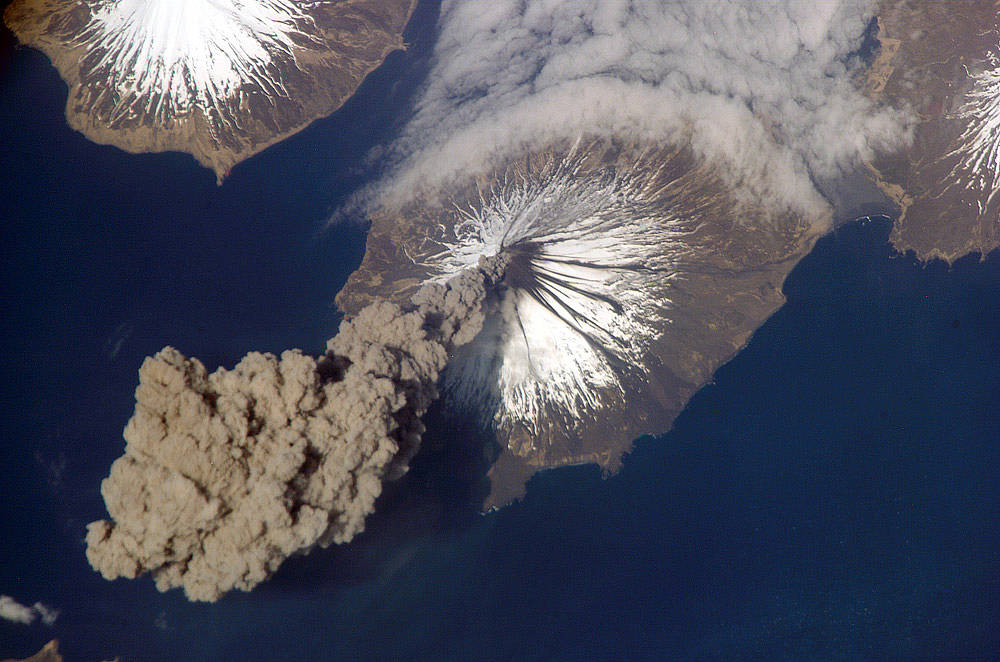
At 3:00 p.m. Alaska Daylight Time on May 23, 2006, Flight Engineer Jeff Williams from International Space Station (ISS) Expedition 13 contacted the Alaska Volcano Observatory (AVO) to report that the Cleveland Volcano had produced a plume of ash. Shortly after the activity began, he took this photograph. This picture shows the ash plume moving west-southwest from the volcano’s summit. A bank of fog (upper right) is a common feature around the Aleutian Islands. The event proved to be short-lived; two hours later, the plume had completely detached from the volcano. The AVO reported that the ash cloud height could have been as high as 6,000 meters (20,000 feet) above sea level.
Cleveland Volcano, situated on the western half of Chuginadak Island, is one of the most active of the volcanoes in the Aleutian Islands, which extend west-southwest from the Alaska mainland. It is a stratovolcano, composed of alternating layers of hardened lava, compacted volcanic ash, and volcanic rocks.Image credit: NASA


























